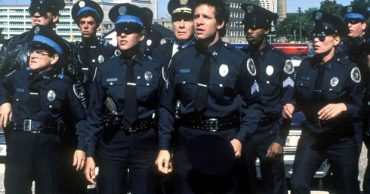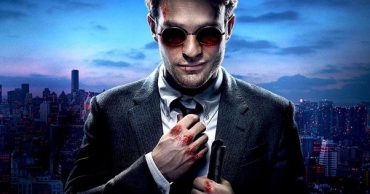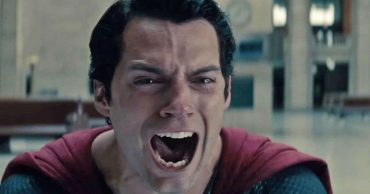
The Valiant Comics have waded into the world of superhero movies with their first adaptation. Produced by Sony, Bloodshot stars Vin Diesel as a resurrected, reprogrammed American soldier used as a killing machine by a mysterious organisation known as Rising Spirit. More garish than Marvel, more jokey than DC, while more modest than both of them, Bloodshot is a classic low-stakes, relatively enjoyable B-movie outing.
Made for a relatively small budget of $42 million, the film should likely do pretty well once its released worldwide – coronavirus panic notwithstanding. For one thing, it offers a different, humbler vision of the superhero movie that the genre needs to stay fresh. And while Bloodshot doesn’t turn the superhero genre completely on its head, it offers an interesting subversion of the genre through its unique premise.
Don’t read if you haven’t seen Bloodshot yet, as this is one of those movies where it’s best to go in knowing absolutely nothing. But if you have managed to catch it already, feel free to read on now.
It Plays With The Origin Story Cliché
For the first half an hour or so, Bloodshot is relentlessly by-the-numbers. Ray Garrison (Vin Diesel) works for the US military, the film opening with him on a raid. He kills multiple faceless bad guys and saves the asset. Afterwards he returns back to base, where he meets his wife (Talulah Riley) and takes her on a dreamy trip to the Amalfi Coast in Italy. Suddenly their sexy honeymoon is interrupted by kidnappers, who press him for information, kill his wife and then kill him.
So far, so cliché. Ray wakes up in a mysterious facility where he is told that his body was donated by the American military and has been resurrected to make him a programmable killing machine, replete with special nanites in his bloodstream that can repair his body at a super fast pace. At first he doesn’t remember anything, then a subtle collection of triggers gives him the name of his killer. He rushes to Budapest and quickly dispatches his enemy.
Then he’s put back into a memory-wipe machine and the whole process starts again.
This origin story is a complete mirage, used as motivation to murder all enemies of the facility. This is why everything seems so familiar. Even the setting of the murder– a meat freezer with “Psycho Killer” on in the background – is referenced later on as influenced by Hollywood movies.
His pre-written script, motivated by revenge, is just like that of a comic book movie. After all, all heroes need an origin story. Some, like Batman or Spider-Man, have their origin story told hundreds of times. By literally portraying this ‘origin’ as a simulation, Bloodshot mocks the unoriginality of origin stories as being necessary parts of creating superhero characters. While the film itself could’ve gone further in its meta-fictional exploration of superhero and action film tropes, its a bold first step for the Valiant franchise nonetheless.
Simulation and misdirection have been seen in superhero before in films such as Iron Man 3, where Mandarin is actually an actor, or Mysterio’s fake villains in Spider-Man: Far From Home. Nonetheless, this concept hasn’t been used to quite such a cynical extent as Bloodshot – which uses it for an origin story, and not the nth iteration of a superhero we already know and love.
It Reveals That True Origins are Unnecessary
Once Ray Garrison finds out that the video played to him of his wife being killed by a mysterious villain is a fake implant, he makes initial inroads to find his real wife. But when he knocks on her door in London, she reveals that they broke up over five years ago. She has a family now and that old life is over.
After this, it may have been tempting for Bloodshot to go even further into Garrison’s backstory in order to find out who he really is, but thankfully the film avoids this completely. After all, with the first half of the film deconstructing by-the-numbers “origin story” tropes, it would’ve been painful to see it lean so far into cliché in the back half. By the end Bloodshot actually states that it’s not who you were that’s important but who you want to become, therefore questioning the very basis of origin stories in terms of character construction.
In the end, he is really just another dead soldier, leading us onto Bloodshot’s bravest theme:
It’s Genuinely Critical of the US Military
The MCU and the US Military make good bedfellows. With genuine fighter planes and other properties of the US military used for the creation of their films, the MCU are not really allowed to criticise its inner workings. In fact, its explicit themes of Americans protecting the world from its worst self make the MCU something of an informal propaganda wing for the military.
Valiant Comics, which don’t need these kind of huge endorsements, and know that they aren’t ever going to conquer the superhero movie universe, can use this to their advantage by being a little more honest about US hegemony. Here Bloodshot asks big questions about what the US military does to its soldiers, filling them with patriotic tales in order for them to fulfil a metaphorical revenge. With so many soldiers joining the American military motivated by revenge for 9/11 – see American Sniper for a literal depiction of this superhero journey – the origin story of Bloodshot doubles up as a critique of the entire American military recruitment process.
Therefore, by breaking free of the facility by the end of the film, Ray metaphorically breaks free of the USA’s grasp. Unlike The Avengers, Ray doesn’t work on behalf of the government, he only works for himself, making him a true individual. Time will tell if the Valiant Cinematic Franchise have the chutzpah to carry on this independent spirit, or if Ray will eventually fold to the American cause. Like all things in Hollywood, it probably depends on the amount of money involved.
 Follow Us
Follow Us





